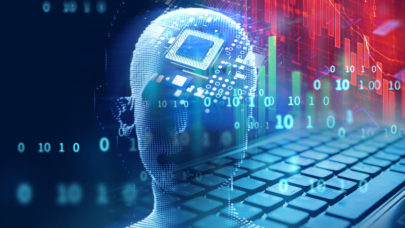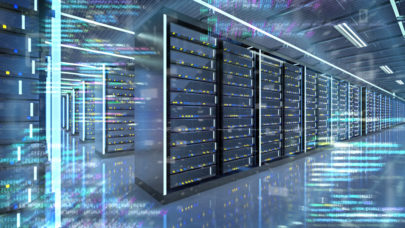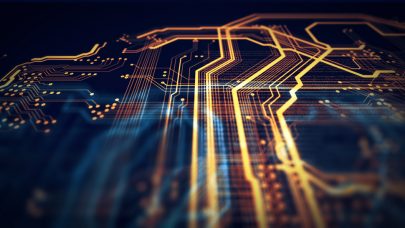
Q&A with Nvidia’s Chief of DGX Systems on the DGX-GB200 Rack-scale System
March 27, 2024
Pictures of Nvidia's new flagship mega-server, the DGX GB200, on the GTC show floor got favorable reactions on social media for the sheer amount of computing po Read more…

Nvidia’s New Blackwell GPU Can Train AI Models with Trillions of Parameters
March 18, 2024
Nvidia's latest and fastest GPU, codenamed Blackwell, is here and will underpin the company's AI plans this year. The chip offers performance improvements from Read more…

It Doesn’t Get Much SWEETER: The Winter HPC Computing Festival in Corpus Christi
February 14, 2024
(Main Photo by Visit Corpus Christi CrowdRiff) Texas A&M University's High-Performance Research Computing (HPRC) team hosted the "SWEETER Winter Comput Read more…

Intel’s Strategy to Free Server Capacity by Pushing AI Inference to PCs
January 18, 2024
AI is here to stay and is becoming a larger part of the workload processed on servers and PCs. That's why Nvidia is seeing success as a chipmaker, and there is excitement around large language models such as Meta's open-source Llama. An eager audience wants to get a handle on such models... Read more…

Google Introduces ‘Hypercomputer’ to Its AI Infrastructure
December 11, 2023
Google ran out of monikers to describe its new AI system released on December 7. Supercomputer perhaps wasn't an apt description, so it settled on Hypercomputer Read more…

Aurora the Survivor: Exascale Supercomputer Arrives After Eight Years of Doom
November 13, 2023
Many products were sacrificed in the eight years it took to bring the Aurora supercomputer to life. Nonetheless, anticipation for the second U.S.Exascale system Read more…

H100 Fading: Nvidia Touts 2024 Hardware with H200
November 13, 2023
Supercomputing enthusiasts are speed demons, so it made sense for Nvidia to discuss its 2024 computing products at Supercomputing 2023. Nvidia's next-gener Read more…

How AMD May Get Across the CUDA Moat
October 5, 2023
When discussing GenAI, the term "GPU" almost always enters the conversation and the topic often moves toward performance and access. Interestingly, the word "GPU" is assumed to mean "Nvidia" products. (As an aside, the popular Nvidia hardware used in GenAI are not technically... Read more…

- Click Here for More Headlines

Whitepaper
Transforming Industrial and Automotive Manufacturing
In this era, expansion in digital infrastructure capacity is inevitable. Parallel to this, climate change consciousness is also rising, making sustainability a mandatory part of the organization’s functioning. As computing workloads such as AI and HPC continue to surge, so does the energy consumption, posing environmental woes. IT departments within organizations have a crucial role in combating this challenge. They can significantly drive sustainable practices by influencing newer technologies and process adoption that aid in mitigating the effects of climate change.
While buying more sustainable IT solutions is an option, partnering with IT solutions providers, such and Lenovo and Intel, who are committed to sustainability and aiding customers in executing sustainability strategies is likely to be more impactful.
Learn how Lenovo and Intel, through their partnership, are strongly positioned to address this need with their innovations driving energy efficiency and environmental stewardship.
Download Now
Sponsored by Lenovo
Whitepaper
How Direct Liquid Cooling Improves Data Center Energy Efficiency
Data centers are experiencing increasing power consumption, space constraints and cooling demands due to the unprecedented computing power required by today’s chips and servers. HVAC cooling systems consume approximately 40% of a data center’s electricity. These systems traditionally use air conditioning, air handling and fans to cool the data center facility and IT equipment, ultimately resulting in high energy consumption and high carbon emissions. Data centers are moving to direct liquid cooled (DLC) systems to improve cooling efficiency thus lowering their PUE, operating expenses (OPEX) and carbon footprint.
This paper describes how CoolIT Systems (CoolIT) meets the need for improved energy efficiency in data centers and includes case studies that show how CoolIT’s DLC solutions improve energy efficiency, increase rack density, lower OPEX, and enable sustainability programs. CoolIT is the global market and innovation leader in scalable DLC solutions for the world’s most demanding computing environments. CoolIT’s end-to-end solutions meet the rising demand in cooling and the rising demand for energy efficiency.
Download Now
Sponsored by CoolIT
Advanced Scale Career Development & Workforce Enhancement Center
Featured Advanced Scale Jobs:
HPCwire Resource Library
HPCwire Product Showcase
© 2024 HPCwire. All Rights Reserved. A Tabor Communications Publication
HPCwire is a registered trademark of Tabor Communications, Inc. Use of this site is governed by our Terms of Use and Privacy Policy.
Reproduction in whole or in part in any form or medium without express written permission of Tabor Communications, Inc. is prohibited.
























